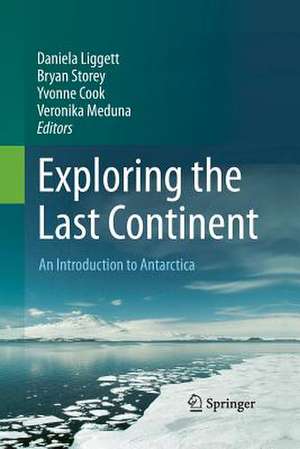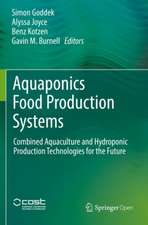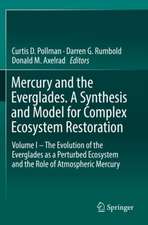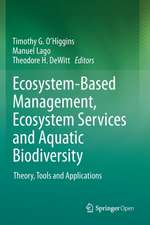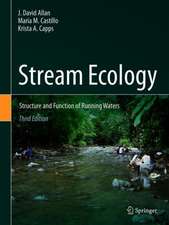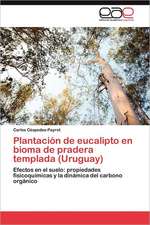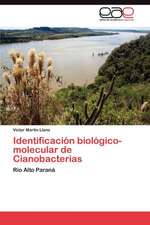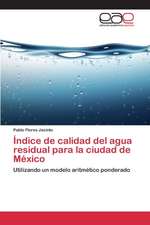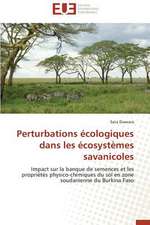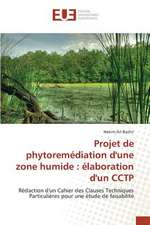Exploring the Last Continent: An Introduction to Antarctica
Editat de Daniela Liggett, Bryan Storey, Yvonne Cook, Veronika Medunaen Limba Engleză Paperback – 23 aug 2016
| Toate formatele și edițiile | Preț | Express |
|---|---|---|
| Paperback (1) | 1681.06 lei 43-57 zile | |
| Springer International Publishing – 23 aug 2016 | 1681.06 lei 43-57 zile | |
| Hardback (1) | 1833.94 lei 38-44 zile | |
| Springer International Publishing – 12 oct 2015 | 1833.94 lei 38-44 zile |
Preț: 1681.06 lei
Preț vechi: 2050.07 lei
-18% Nou
Puncte Express: 2522
Preț estimativ în valută:
321.66€ • 336.75$ • 266.16£
321.66€ • 336.75$ • 266.16£
Carte tipărită la comandă
Livrare economică 07-21 aprilie
Preluare comenzi: 021 569.72.76
Specificații
ISBN-13: 9783319345673
ISBN-10: 3319345672
Pagini: 597
Ilustrații: IX, 597 p.
Dimensiuni: 155 x 235 mm
Greutate: 9.07 kg
Ediția:Softcover reprint of the original 1st ed. 2016
Editura: Springer International Publishing
Colecția Springer
Locul publicării:Cham, Switzerland
ISBN-10: 3319345672
Pagini: 597
Ilustrații: IX, 597 p.
Dimensiuni: 155 x 235 mm
Greutate: 9.07 kg
Ediția:Softcover reprint of the original 1st ed. 2016
Editura: Springer International Publishing
Colecția Springer
Locul publicării:Cham, Switzerland
Cuprins
1. Introduction.- PART 1: Physical Sciences.- 2. A Continent under Ice: Studying Geology in Antarctica.- 3. A Long Journey South: Unravelling Antarctica’s Geological History.- 4. Looking Back to the Future: Palaeoclimate Studies in Antarctica.- 5. An Ice-bound Continent: Antarctic’s Cryosphere and Hydrological Systems.- 6.Weather and Climate: Antarctica’s Role in the Global Atmospheric System.- 7.The Southern Ocean: Antarctica’s Northern Boundary.- 8. From Ice to Space: The Antarctic Atmosphere.-PART 2.- 9. Remote Ocean Outposts: Biological Diversity of the Subantarctic Islands.- 10. Life on Land: Aquatic Terrestrial Ecosystems in Antarctica.- 11. Life on Land: Non-aquatic Terrestrial Eccosystems in Antarctica.- 12. Beyond the Ice: Marine Ecosystems in the Southern Ocean.- 13. Antarctic Megafauna: Birds and Mammals of Antarctica.- 14. Surviving in the Cold: Invertebrates and Fish in Antarctica.- 15. Polar Expeditions: Historical and Social Aspects of Antarctic Exploration.- 16. A Continent for Peace and Science: Antarctic Governance.- 17. Extreme and Unusual Psychology in Antarctica.- 18. Destination Icy Wilderness: Antarctic Tourism.- 19. Creativity at the Frozen Frontier: The Arts in Antarctica.- 20. Commercial Harvest: Exploitation of Antarctic Marine Living Resources.- 21. Southern Ocean Fisheries: Managing Harvests of Marine Life.- 22. The Search for Extremophiles: Antarctic Biological Prospecting.- 23. The Question of Mining: Geological Resources in Antarctica.- 24. Ice and Mineral Resources: Regulatory Challenges of Commercial Exploitation.- 25. Recent Climate Change: Causes and Impacts of Climate Change in Antarctica.- 26. Reducing Fossil Fuel Consumption: Renewable Energy in Antarctica.- 27. Alien Invasions and the Impact of Non-native Species: Changing the Face of Life on Land in Antarctica?- 28. Future Challenges in Antarctic Research: International and Interdisciplinary Cooperation.- 29. Antarctic Scientific Collaboration: The Role of SCAR.
Recenzii
“The book is well-organized with frequent subheadings enabling readers to dive in and find information on a particular topic of interest. … This volume will be a useful resource to anyone involved in Antarctic science, environmental regulation, or politics, enabling them to find information about areas beyond their own speciality. At the same time, it covers a wide range of topics presented in a way that is accessible to interested general readers.” (Robert Larter, The Quarterly Review of Biology, Vol. 93 (1), March, 2018)
“This book provides an introduction to the exploration of Antarctica … . The volume includes a short introduction followed by four sections of articles arranged thematically. … Broad and thoughtful in its approach, this work is a valuable addition to the expanding canon of analyses of the history and future of Antarctica. Summing Up: Recommended. Upper-division undergraduates through professionals/practitioners; general readers.” (H. Doss, Choice, Vol. 53 (9), May, 2016)
“This book provides an introduction to the exploration of Antarctica … . The volume includes a short introduction followed by four sections of articles arranged thematically. … Broad and thoughtful in its approach, this work is a valuable addition to the expanding canon of analyses of the history and future of Antarctica. Summing Up: Recommended. Upper-division undergraduates through professionals/practitioners; general readers.” (H. Doss, Choice, Vol. 53 (9), May, 2016)
Textul de pe ultima copertă
This multidisciplinary book examines Antarctica, from its geological origins as it separated from the Gondwana supercontinent, to Captain James Cook and crew, the first recorded observation by Europeans, to its present as a research outpost protected from energy exploitation, and a climate change bellwether.
The first part of the book discusses Antarctica’s physical systems over time – the continent’s geological evolution, its climate, weather and atmosphere, and its distinctive oceanographic, hydrographic and glaciological features. This section includes chapters on Antarctica’s geological history; its cryosphere and hydrological systems; and the Antarctic atmosphere, including the role Antarctica plays in the global atmospheric system.
The second part of the volume surveys Antarctica’s marine and terrestrial ecosystems. Among the chapter topics in this section are biological diversity of the Subantarctic Islands; aquatic and non-aquatic terrestrial ecosystems; marine ecosystems of the Southern Ocean, birds and mammals, invertebrates and fish of Antarctica.
The third part is devoted to the history of human endeavors in Antarctica and the politics behind human activities in the Southern Ocean and on the continent. The contributors delve into historical and social aspects of Antarctic exploration; the governance approach which sets the continent aside for peace and science; tourism; psychological aspects of human endeavours on the Ice; and Antarctic arts.
The final part of the book weaves together insights in the physical, social and human sciences to illuminate a discussion of current issues, such as climate change, bio-prospecting, science collaboration, and environmental management. Individual chapters discuss the exploitation of marine living resources; biological prospecting; geological resources; renewable energy; regulatory challenges of commercial exploitation; the causes and impacts of climate change in
Antarctica; and the role of the Scientific Committee on Antarctic Research (SCAR).
The first part of the book discusses Antarctica’s physical systems over time – the continent’s geological evolution, its climate, weather and atmosphere, and its distinctive oceanographic, hydrographic and glaciological features. This section includes chapters on Antarctica’s geological history; its cryosphere and hydrological systems; and the Antarctic atmosphere, including the role Antarctica plays in the global atmospheric system.
The second part of the volume surveys Antarctica’s marine and terrestrial ecosystems. Among the chapter topics in this section are biological diversity of the Subantarctic Islands; aquatic and non-aquatic terrestrial ecosystems; marine ecosystems of the Southern Ocean, birds and mammals, invertebrates and fish of Antarctica.
The third part is devoted to the history of human endeavors in Antarctica and the politics behind human activities in the Southern Ocean and on the continent. The contributors delve into historical and social aspects of Antarctic exploration; the governance approach which sets the continent aside for peace and science; tourism; psychological aspects of human endeavours on the Ice; and Antarctic arts.
The final part of the book weaves together insights in the physical, social and human sciences to illuminate a discussion of current issues, such as climate change, bio-prospecting, science collaboration, and environmental management. Individual chapters discuss the exploitation of marine living resources; biological prospecting; geological resources; renewable energy; regulatory challenges of commercial exploitation; the causes and impacts of climate change in
Antarctica; and the role of the Scientific Committee on Antarctic Research (SCAR).
Caracteristici
Offers background reading to those keen to learn more about the Antarctic continent Multi-disciplinarity
Take a systematic approach to providing insights into Antarctic ecosystems and the geophysical environment
The editors and contributors are experts on Antarctica, whose work spans a wide range of relevant disciplines
Take a systematic approach to providing insights into Antarctic ecosystems and the geophysical environment
The editors and contributors are experts on Antarctica, whose work spans a wide range of relevant disciplines
